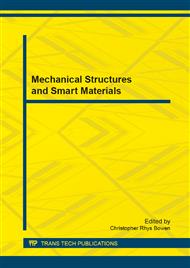p.536
p.540
p.544
p.550
p.558
p.562
p.568
p.572
p.576
CFD-Based Study of Velocity and Temperature Distribution among Rib-Tube in Heat Environment
Abstract:
The velocity distribution coupled thermal and fluid flow a rib-tube was studied in this article. Based on theory analysis and numerical simulation, we choose modal and wall function to simulate the flow in rib-tube, velocity to definite the dispersed phase. The governing equations were built and solved by numerical way. The progress of flow and heat exchange in rib-tube, the rules and contours of temperature, velocity were obtained, they shows that, along the rib-tube, velocity was changed with the temperature rising , which could give us a reference for engineering application .
Info:
Periodical:
Pages:
558-561
Citation:
Online since:
January 2014
Authors:
Keywords:
Price:
Сopyright:
© 2014 Trans Tech Publications Ltd. All Rights Reserved
Share:
Citation:


